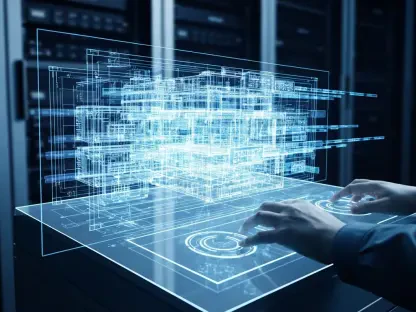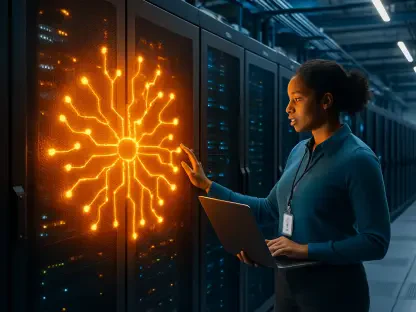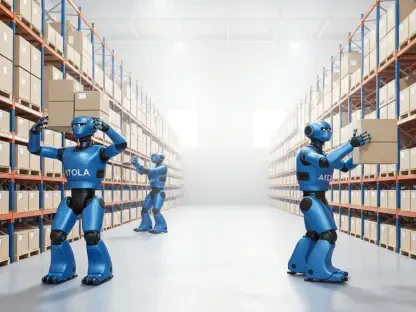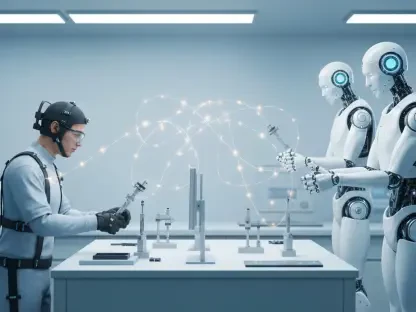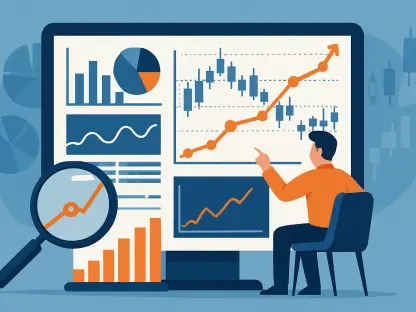Imagine a world where humanoid robots seamlessly assist in homes, navigate complex industrial tasks, or explore uncharted terrains in space, mirroring human dexterity with uncanny precision. This vision, while captivating, remains tantalizingly out of reach as the robotics market grapples with significant hurdles, even as artificial intelligence (AI) races ahead. At a landmark event in Ancient Olympia, Greece, humanoid robots recently showcased their potential through sports like soccer and archery, drawing global attention to their capabilities and limitations. This market analysis delves into the current state of the humanoid robotics industry, exploring key trends, data-driven insights, and projections that shape its trajectory. It aims to uncover why physical robotics lags behind digital AI advancements and what strategies could propel this sector toward transformative growth in the coming years.
Market Dynamics: Trends and Challenges in Humanoid Robotics
Showcasing Potential Amid Persistent Barriers
The humanoid robotics market is witnessing a surge of interest, underscored by high-profile demonstrations that highlight both innovation and inherent constraints. At the recent International Humanoid Olympiad held in Ancient Olympia, robots engaged in activities that captivated audiences, from shadow-boxing to precision-based archery. These displays signal a growing industry focus on public engagement and proof-of-concept events to attract investment. However, despite such visibility, the market faces a stark reality: humanoid robots struggle with basic physical tasks that humans perform effortlessly. Industry reports suggest that achieving fine motor skills for mundane activities like folding clothes remains a distant goal, with timelines extending beyond a decade from 2025. This gap between spectacle and practicality defines the current market landscape, where enthusiasm must be tempered by technical challenges.
Data Disparity: AI’s Lead Over Physical Robotics
A critical factor shaping market dynamics is the vast disparity in data availability between AI and humanoid robotics. AI systems thrive on abundant digital datasets, enabling rapid advancements in areas like language processing and predictive analytics. In contrast, robotics companies face a severe shortage of real-world interaction data, essential for training robots to handle unpredictable physical environments. Analysts estimate that this data lag places robotics significantly behind AI, hampering the development of versatile, autonomous machines. The cost and time required to gather physical interaction data through real-world testing further constrain market growth, pushing companies to seek innovative solutions. This imbalance not only affects product readiness but also investor confidence, as returns on robotics remain slower compared to AI-driven sectors.
Investment Surge and Collaborative Momentum
Despite challenges, the humanoid robotics market is buoyed by substantial financial backing and cross-sector collaboration. Billions of dollars are flowing into research and development, fostering partnerships between academia, technology firms, and manufacturers. This investment wave is driving incremental progress, with new prototypes emerging regularly to tackle specific industrial or exploratory tasks. Market data indicates a growing focus on synergies that combine expertise in hardware, software, and data analytics to address dexterity issues. Such collaborative efforts are pivotal, as they accelerate problem-solving and reduce the time to market for specialized robotic solutions. However, stakeholders note that sustained funding is crucial to bridge the gap between controlled demonstrations and scalable, everyday applications.
Sector-Specific Applications and Future Projections
Niche Markets as Early Adopters
Looking ahead, market projections suggest that humanoid robots will first gain traction in niche, controlled environments rather than broad consumer spaces. Sectors like space exploration and industrial warehousing are identified as early adoption zones due to their structured settings and high demand for automation. Analysts predict that within the next five to seven years from 2025, robots could play significant roles in tasks such as equipment maintenance in space or package sorting in logistics hubs. These applications offer valuable real-world data collection opportunities, essential for refining robotic capabilities. Success in these areas could pave the way for broader market penetration, though consumer-facing domestic robots are not expected to be viable until well after 2035, based on current development paces.
Innovative Approaches Reshaping Development
Emerging technologies and interdisciplinary strategies are poised to redefine the humanoid robotics market over the next decade. Concepts such as integrating data from human prosthetics to enhance robotic motor skills are gaining traction, offering a novel pathway to mimic human movement. Additionally, experimental advancements like biological computing, which explores brain-cell-based chips for adaptive learning, could revolutionize how robots process and respond to their surroundings. These innovations, while in early stages, signal a shift toward bio-inspired robotics, potentially accelerating market growth if scalability challenges are overcome. Industry forecasts highlight that such disruptive ideas, backed by robust investment, could shorten the timeline for achieving practical autonomy in robots.
Regional Variations in Market Strategies
Another dimension shaping the market is the diversity in regional approaches to robotics development and public engagement. In some regions, particularly in Asia, companies frequently showcase robots at public events, providing raw, unfiltered glimpses into their progress and setbacks. Conversely, North American firms often prioritize curated media releases, presenting polished outcomes that may obscure developmental hurdles. This contrast influences market perception and consumer trust, with transparent demonstrations sometimes fostering greater public interest despite visible flaws. Market analysis suggests that balancing transparency with strategic marketing will be key for companies aiming to build long-term credibility and attract diverse investor pools across global markets.
Reflecting on Insights: Strategic Pathways Forward
Reflecting on the comprehensive analysis of the humanoid robotics market, several pivotal findings emerged from the examination of trends, challenges, and projections. The industry, while brimming with potential as evidenced by captivating showcases in Ancient Olympia, stands at a crossroads where physical limitations starkly contrast with AI’s digital dominance. The data disparity and dexterity challenges underscore a market not yet ready for widespread consumer adoption, with timelines stretching over a decade for household integration. Investments and collaborations offer a beacon of hope, driving progress in niche applications like space and logistics, while innovative bio-inspired technologies hint at future breakthroughs. Regional differences in transparency further color market perceptions, influencing stakeholder trust. Moving forward, strategic recommendations include prioritizing real-world deployments in controlled sectors to build robust datasets, fostering interdisciplinary research for faster innovation, and maintaining clear communication with investors and consumers about realistic timelines. These steps, if acted upon, promise to steer the humanoid robotics market toward a future where physical machines could one day rival the seamless efficiency of their digital AI counterparts.



